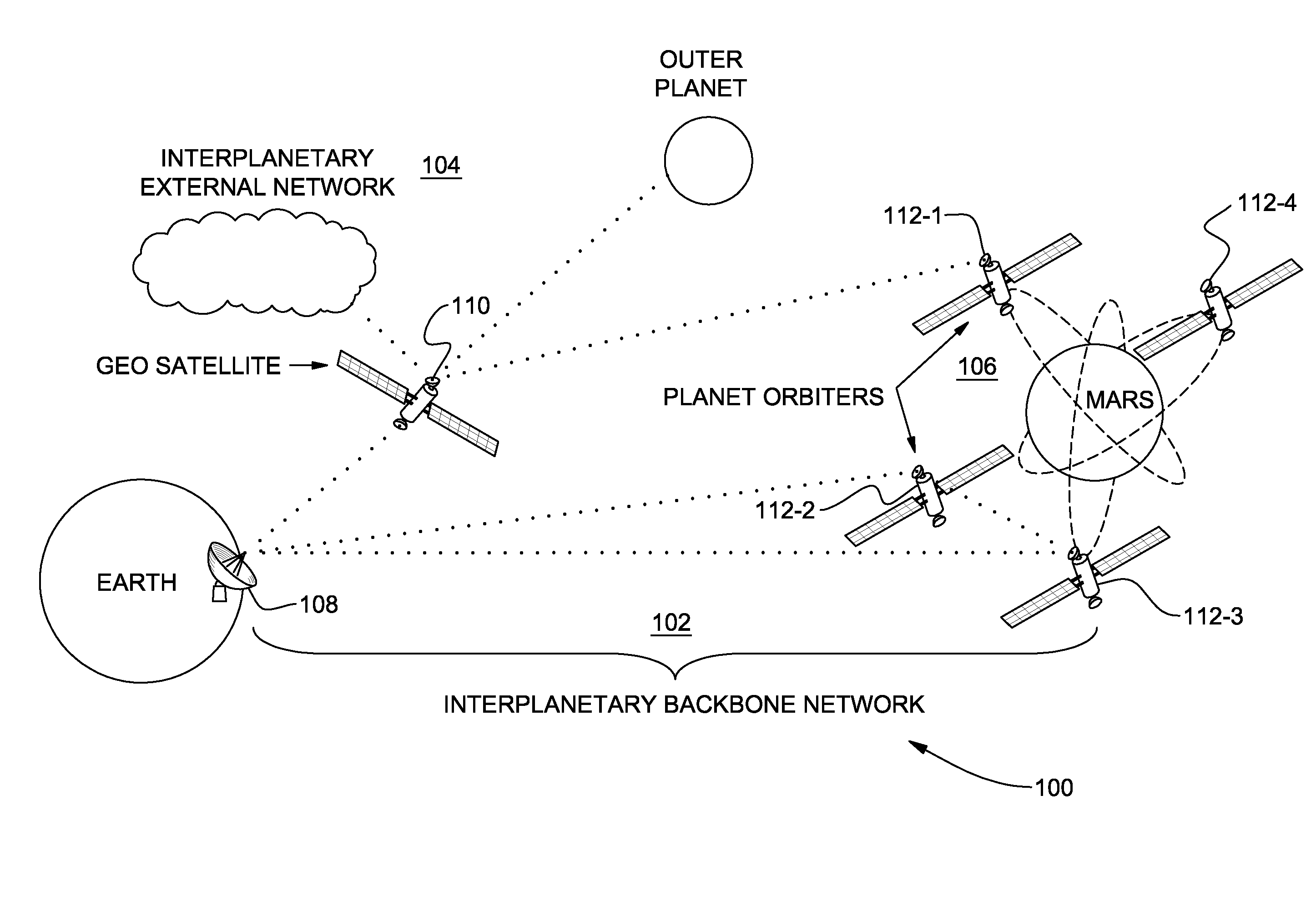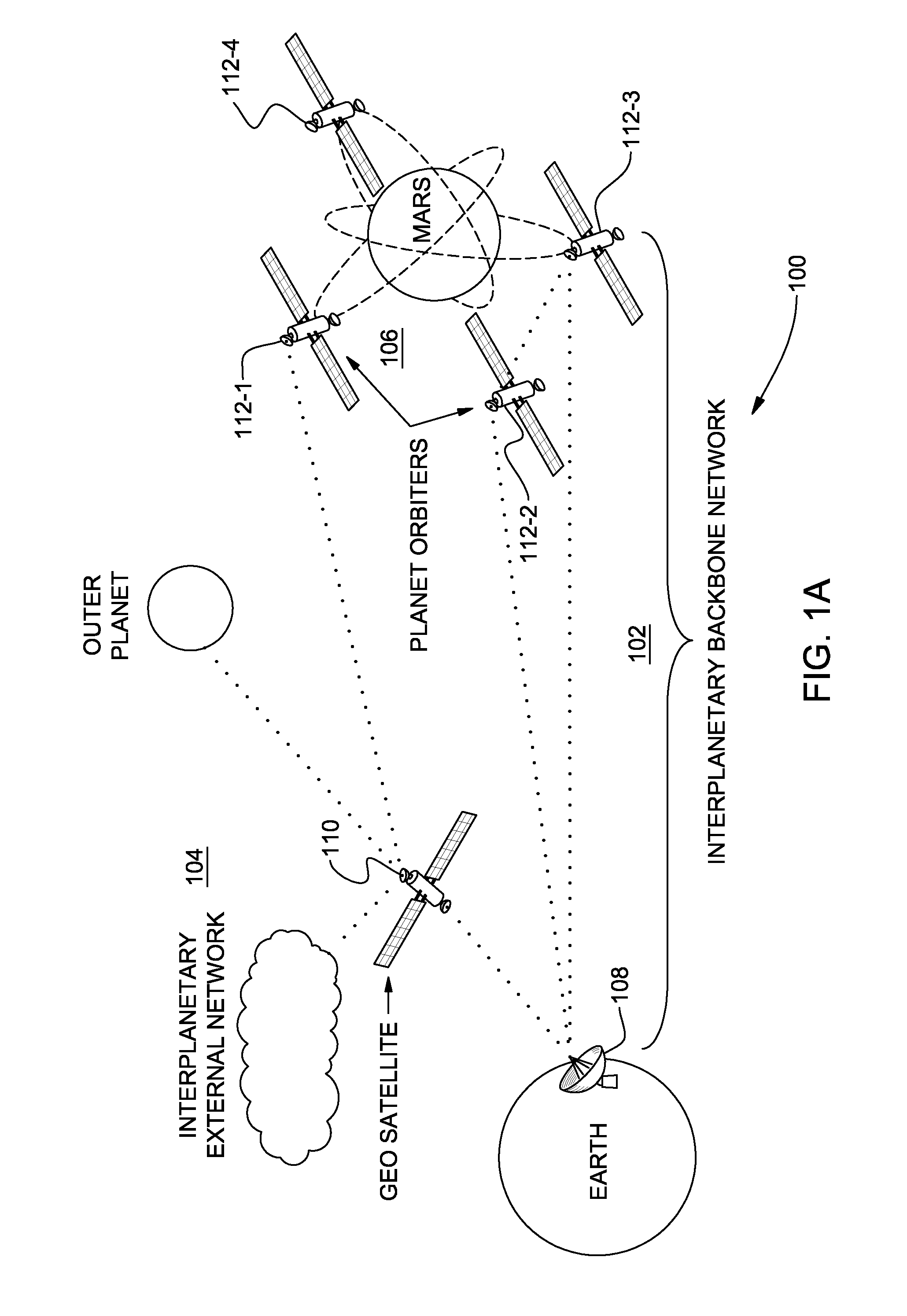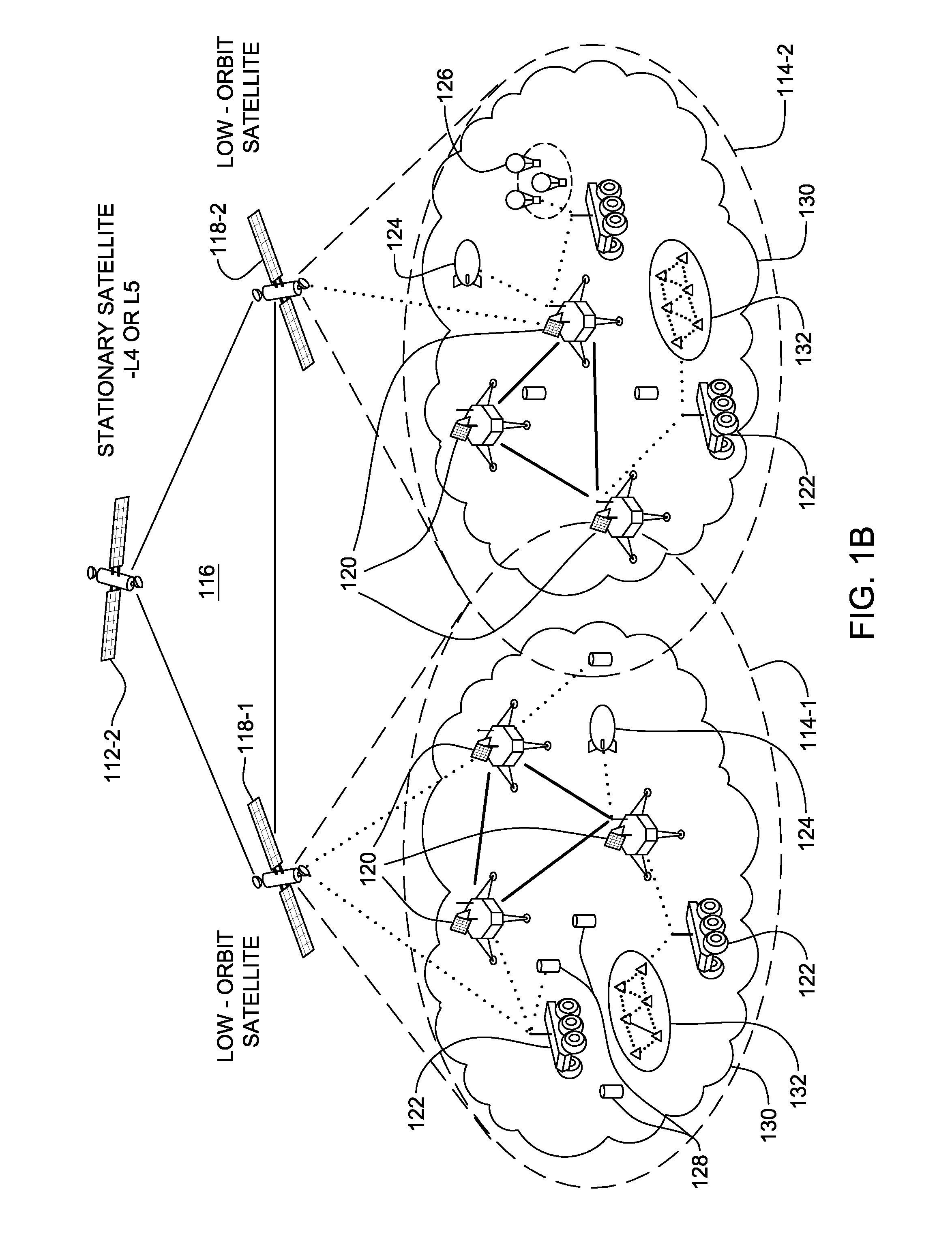Remote gateway selection in an interplanetary communications network and method of selecting and handing over remote gateways
a remote gateway and interplanetary communication technology, applied in the field of ad hoc interplanetary communications networks, can solve the problems of inability to meet internet-based routing nor terrestrial mobile ad hoc routing protocols, unrealized interplanetary communications network infrastructure, and connectivity may change, so as to minimize transmission power consumption, minimize maintenance overhead and computational costs, the effect of maximizing gateway contact times
- Summary
- Abstract
- Description
- Claims
- Application Information
AI Technical Summary
Benefits of technology
Problems solved by technology
Method used
Image
Examples
Embodiment Construction
[0027]Turning now to the drawings, FIGS. 1A-B illustrate an example of a preferred hierarchical interplanetary communications network 100 or Interplanetary Internet, referred to herein as an Interplanetary Communications Neural Network (ICNN). Preferably, ICNN nodes are hierarchically organized with: a primary system or sub-network (interplanetary backbone network 102); an autonomous intermediate system or sub-network (interplanetary external network 104 with nodes having predictable trajectories); and, one or more tertiary systems or sub-networks (e.g., planetary network(s) 106). The autonomous intermediate sub-network 104 and tertiary sub-networks 106 may periodically attach to the interplanetary backbone network 102. At one end communications originate / terminate at one or more fixed earth stations 108. The intermediate nodes in the interplanetary external network104 include, for example, a geostationary (GEO) satellite 110 relaying communications to ICNN endpoints. A typical plan...
PUM
 Login to View More
Login to View More Abstract
Description
Claims
Application Information
 Login to View More
Login to View More - R&D
- Intellectual Property
- Life Sciences
- Materials
- Tech Scout
- Unparalleled Data Quality
- Higher Quality Content
- 60% Fewer Hallucinations
Browse by: Latest US Patents, China's latest patents, Technical Efficacy Thesaurus, Application Domain, Technology Topic, Popular Technical Reports.
© 2025 PatSnap. All rights reserved.Legal|Privacy policy|Modern Slavery Act Transparency Statement|Sitemap|About US| Contact US: help@patsnap.com



